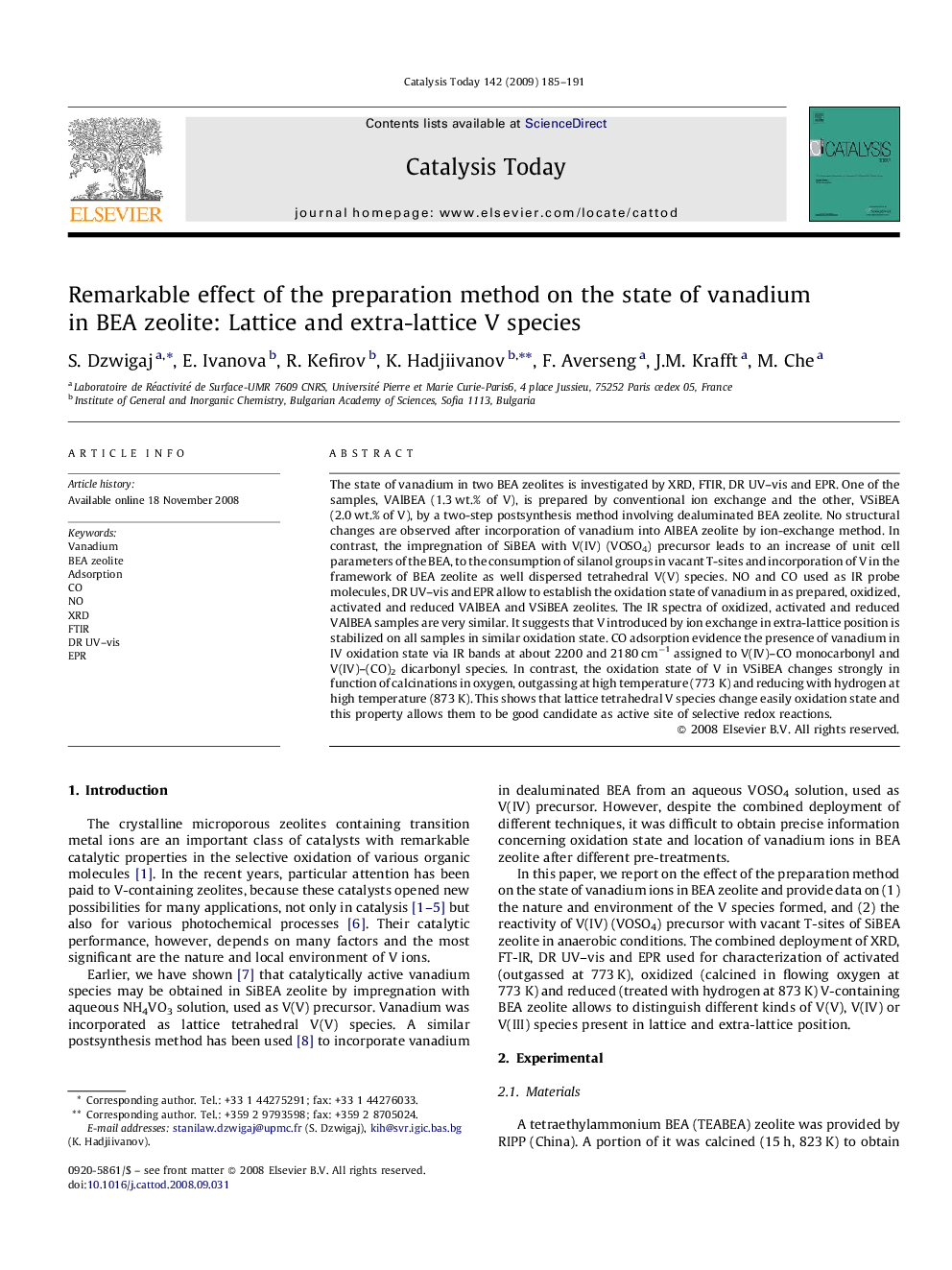| Article ID | Journal | Published Year | Pages | File Type |
|---|---|---|---|---|
| 57436 | Catalysis Today | 2009 | 7 Pages |
The state of vanadium in two BEA zeolites is investigated by XRD, FTIR, DR UV–vis and EPR. One of the samples, VAlBEA (1.3 wt.% of V), is prepared by conventional ion exchange and the other, VSiBEA (2.0 wt.% of V), by a two-step postsynthesis method involving dealuminated BEA zeolite. No structural changes are observed after incorporation of vanadium into AlBEA zeolite by ion-exchange method. In contrast, the impregnation of SiBEA with V(IV) (VOSO4) precursor leads to an increase of unit cell parameters of the BEA, to the consumption of silanol groups in vacant T-sites and incorporation of V in the framework of BEA zeolite as well dispersed tetrahedral V(V) species. NO and CO used as IR probe molecules, DR UV–vis and EPR allow to establish the oxidation state of vanadium in as prepared, oxidized, activated and reduced VAlBEA and VSiBEA zeolites. The IR spectra of oxidized, activated and reduced VAlBEA samples are very similar. It suggests that V introduced by ion exchange in extra-lattice position is stabilized on all samples in similar oxidation state. CO adsorption evidence the presence of vanadium in IV oxidation state via IR bands at about 2200 and 2180 cm−1 assigned to V(IV)–CO monocarbonyl and V(IV)–(CO)2 dicarbonyl species. In contrast, the oxidation state of V in VSiBEA changes strongly in function of calcinations in oxygen, outgassing at high temperature (773 K) and reducing with hydrogen at high temperature (873 K). This shows that lattice tetrahedral V species change easily oxidation state and this property allows them to be good candidate as active site of selective redox reactions.
